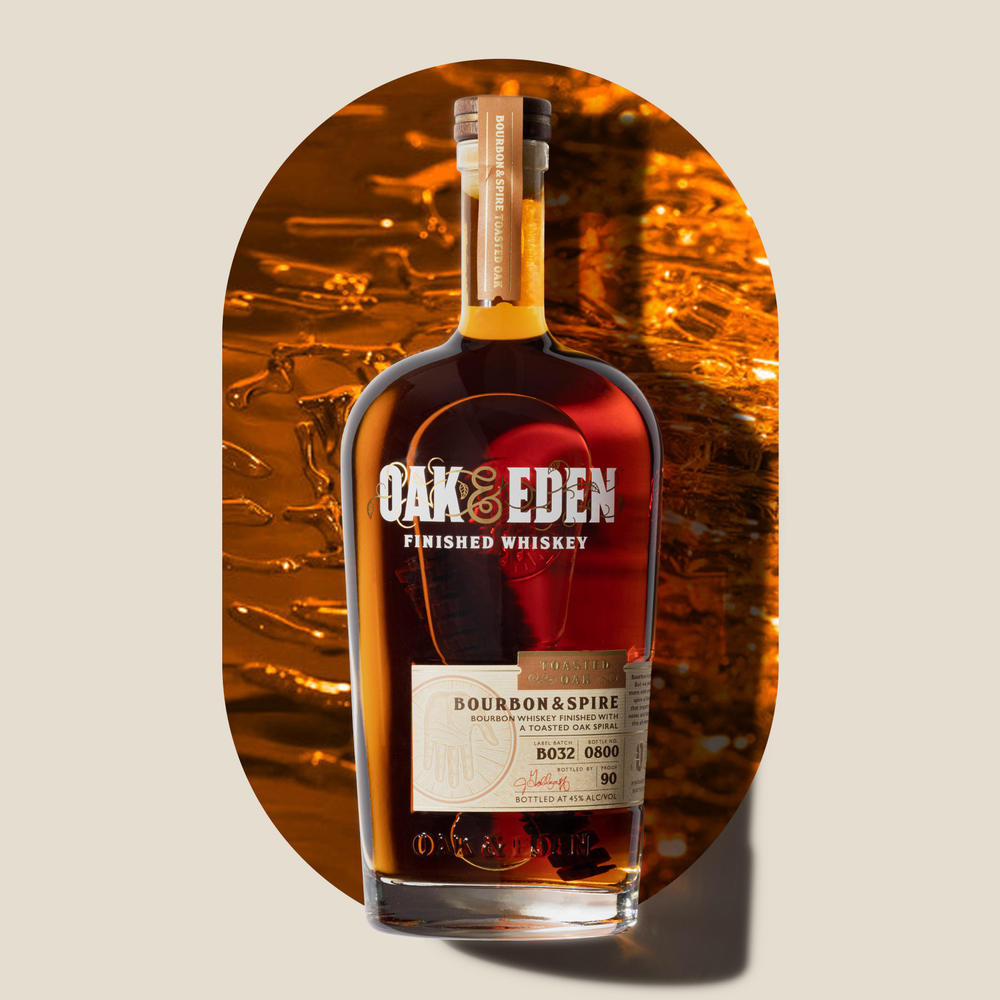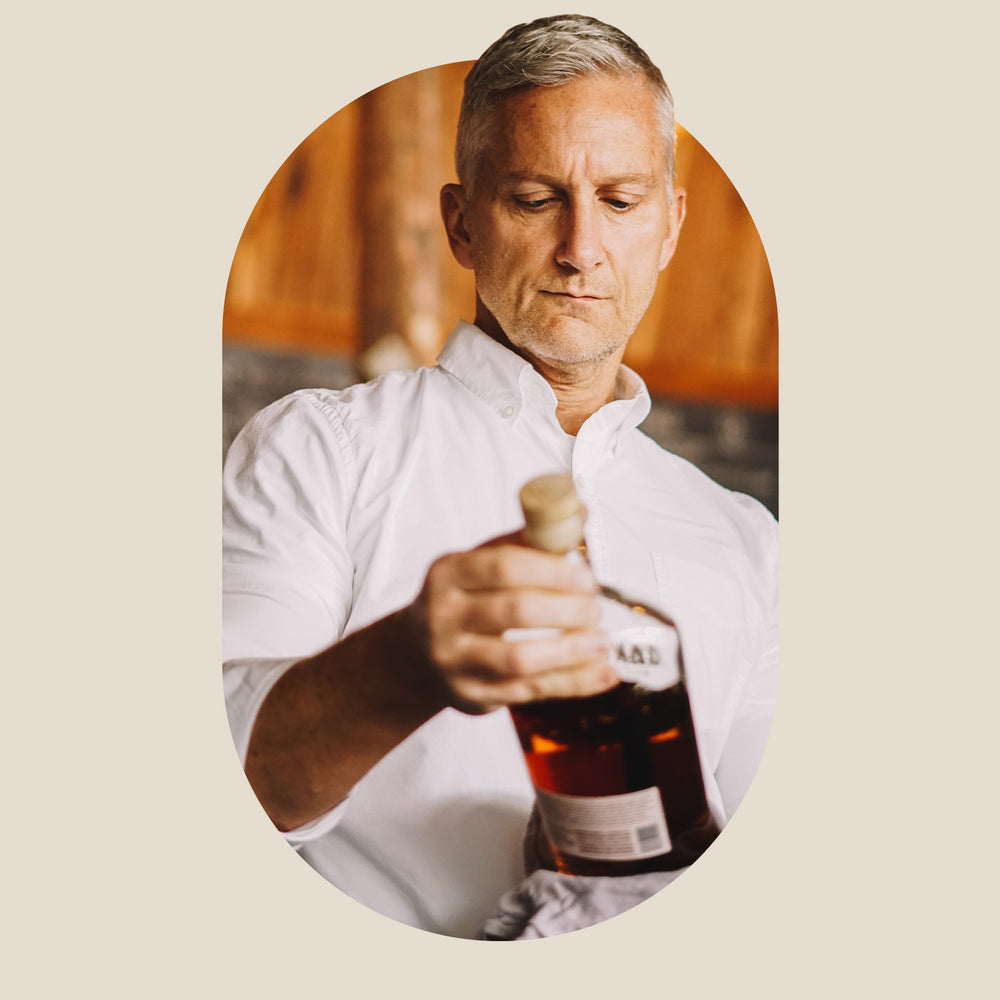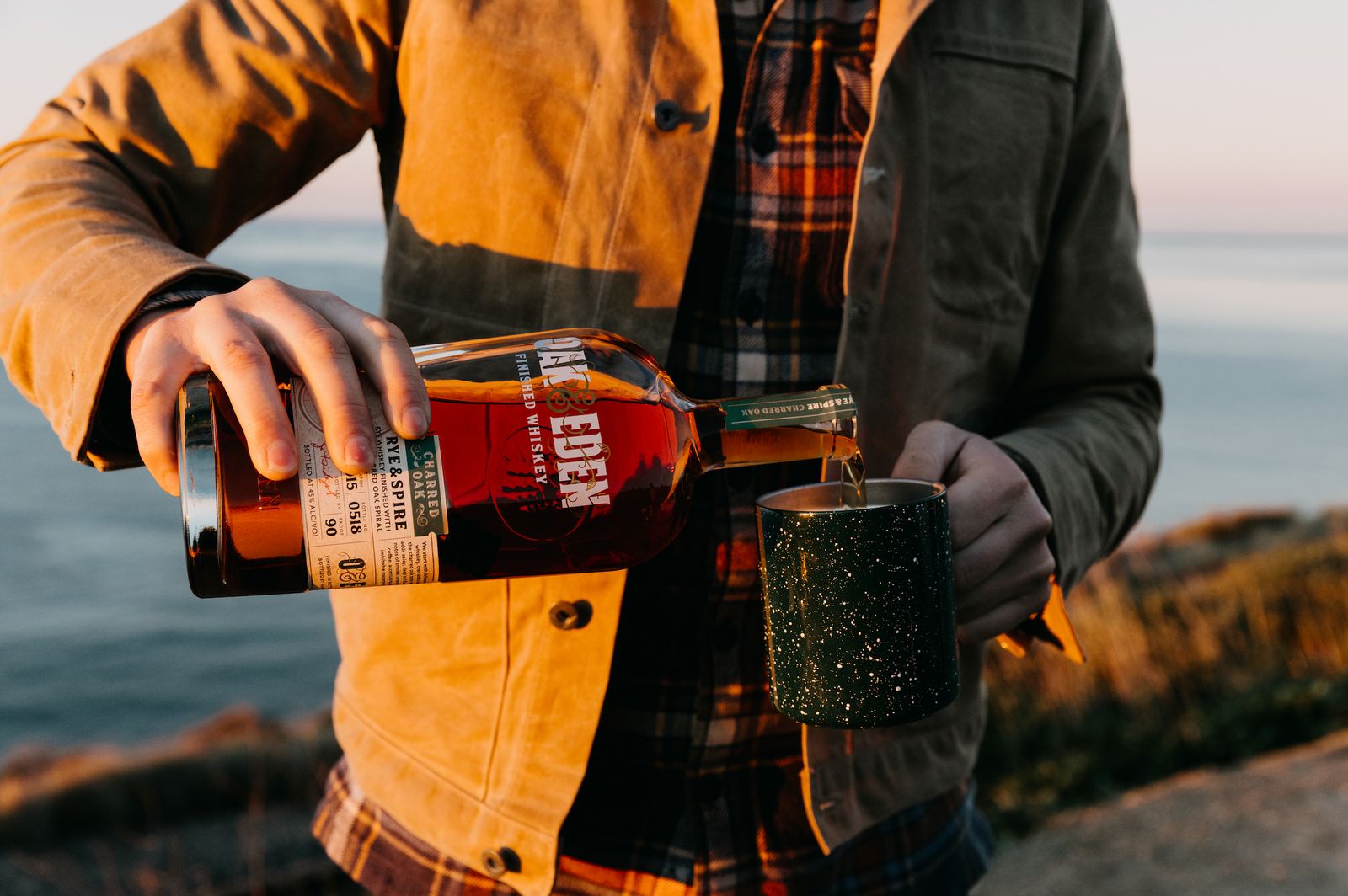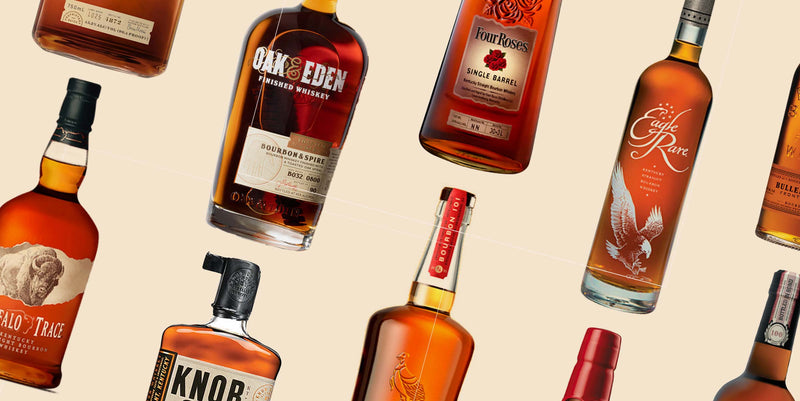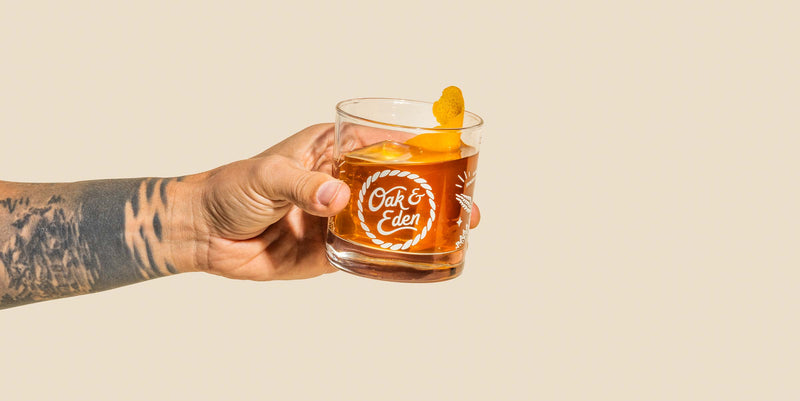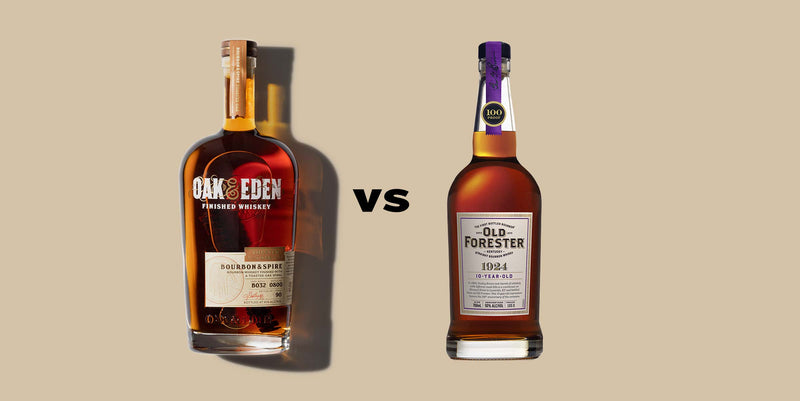When the conversation turns to whiskey, there are usually two camps: the purist, who knows every percentage of every grain in the libation in their glass, and the enthusiast, who has a genuine appreciation for whiskey but cares more about the finished flavor profile than the distillation and production process.
While some distilleries find it difficult to cater to both, Oak & Eden specializes in producing craft whiskey that impresses the purist and satiates the enthusiast. We know you don’t have to be an anorak to have a working knowledge of whiskey to appreciate the flavor profile your favorite bourbon lends to an old fashioned.
Whether you’re well versed in whiskey or a novice just along for the ride, we’ll tell you what you need to know about the differences between rye whiskey and bourbon. We’ll talk about how they are made, what sets them apart, and how Oak & Eden crafts both using an innovative bottling process to create a customizable finished spirit unlike anything else.
The Distilling and Barreling Process
Before we begin, let’s settle something very important: both rye whiskey and bourbon are types of whiskey.
When you hear someone say, “I don’t like whiskey, but I do like bourbon,” they’re confused. What they really mean is that they prefer the finished flavor profile that bourbon offers over other types of whiskey they have tasted.
All whiskey starts the same; as a grain that is mashed and blended with water. In the United States, the Alcohol and Tobacco Tax and Trade Bureau develops and enforces the laws and standards that control the production of whiskey and other spirits.
The Mash
Every distiller in the U.S. has to abide by certain guidelines when distilling spirits, including whiskey. The first rule governs what’s called the mash bill, or the percentage of each type of grain with which the whiskey begins.
- Rye. Rye whiskey is required to contain at least 51% rye mash. The remaining 49% can be made up of any other type or combination of grain (like corn or barley).
- Bourbon. Bourbon starts off as 51% corn mash, with allowable grain variances in the remaining 49%.
The one caveat is Canadian rye whiskey. Canadian law doesn't require rye whiskey to contain any rye at all (which some argue makes it not rye whiskey).
While the mash bill is the foundation of the spirit being distilled, it doesn’t actually play a major role in the finished product. In other words, the mash bill doesn’t lend as much flavor to the bourbon or rye as the finishing process does.
Fermenting
Once the initial grains have been mashed, water and yeast are added to begin the fermentation process. At the end of fermentation, alcohol is colorless and essentially flavorless. Laws require that both bourbon and rye be distilled at 160 proof or below during this stage.
You can think of distilled alcohol in this stage as a blank canvas a distiller uses to create craft whiskies.
Barreling
This step separates rye and bourbon even further and creates the unique flavor profiles that make rye spicy and vegetative and bourbon sweet with notes of caramel and toffee.
- Rye. Rye starts out in a new American oak barrel at 125 proof or less. Rye is barreled for two years or less. The barreling process pulls out the distinct flavors of the rye mash and gives the rye whiskey the peppery, savory flavor for which it is known.
- Bourbon. Also barreled in new American oak, bourbon also sleeps for about two years. The barreling processing helps extract the sweetness of the corn mash in the bourbon, and the level of char on the barrel creates differing flavor finishes.
Some ryes and bourbons are barreled longer. If they spend more than two years in the barrel, they’re considered “straight rye” or “straight bourbon.” These spirits have a higher concentration of flavor and a higher ABV.
The barreling process is important because, in terms of the flavor of any whiskey, the wood plays the lead. The type of wood used, the amount of char on the barrel, and the length of time the spirit is barreled all determine the final flavor profile.
Secondary Barreling
Once a distillery has barreled their rye or bourbon, they’ll either bottle it and send it to market or send it to a secondary barrel for finishing.
Secondary barreling involves transferring the rye or bourbon to a secondary barrel to further adjust the color and flavor. Different woods, chars, and even old barrels that once held other spirits are used to intensify flavors, deepen colors, and manipulate the mouthfeel of the finished product, creating a customized or “finished” spirit.
The finished spirits industry has grown rapidly in the last decade, affording us whiskies that often have hybrid-like flavor profiles. Whiskeys infused with coffee, beer, or even cabernet are completely possible in the finished spirit distillation process.
Bottling
Generally, bottling isn’t very exciting. Especially for mass-produced ryes and bourbons, the process is pretty standard and typically uneventful in terms of changing the way the rye or bourbon tastes.
Most rye and bourbon are diluted at this stage to achieve the desired ABV. However, if the whiskey is not diluted, it’s referred to as bottle proof. These whiskeys have a higher ABV and a more intense flavor and color profile.
Mass bottling is usually done by automation. A single machine can bottle, cap, and label enough product to fill a truck in under an hour.
Rye Whiskey vs. Bourbon: Flavor and Finish
Because both rye whiskey and bourbon start out clear and flavorless, it really is the wood that determines the flavor profile of both. Bourbon may be well-loved by many because it’s sweeter, but rye certainly has its place at the table for its ability to create a cocktail without adding additional sugary sweetness.
Rye Whiskey
Grassy, peppery, spicy, savory, and vegetative. These words describe a solid rye whiskey. The flavor profile will be aggressive, bold, and usually richer in smoke flavor and aroma than bourbon.
Often rye whiskey has notes of oak from the barreling process. If the oak presence is high enough, the rye whiskey may have a slightly bitter flavor. These flavors combine with a sting that washes over the palate, sharp and smooth.
Bourbon
Never as popular as it is now, bourbon is the new go-to for craft cocktails that once demanded rye. Old fashioneds, Manhattans, and even whiskey sours are experiencing an uptrend in the use of bourbon as the main ingredient.
Bourbon tends to be sweeter. The sugars in the corn mash are highlighted during the barreling process and brought forward by the level of char on the oak. You’ll get vanilla, oak, caramel, and even toffee when you taste bourbon.
The Bottom Line
Both rye and bourbon start out on equal footing: 51% grain mash resulting in a distilled alcohol that is colorless and flavorless. The barreling process, and specifically the wood, determine the final flavor of these (and every) whiskey.
A New Perspective on Bottling Rye and Bourbon
Finished whiskey changes the way you drink whiskey. Unlike legacy brands that rely on the purity of one uniform flavor, finished whiskey is a little like craft beer: unique, inspired, and defined by a different set of variables.
At Oak & Eden, we saw an opportunity to change the way whiskey is finished… and we took it.
In-Bottle Finishing
Remember that “finished” whiskey is usually transferred from the original new American oak barrel in which it aged to another secondary barrel. This barrel can be virtually any type of wood, of any age, and of any char level. This barrel might have once stored wine or beer, or perhaps another spirit.
Although that finishing process allows you to customize whiskey, we developed a way to customize it even further. This micro-finishing process happens in the bottle, allowing us to create an even more complex flavor profile that is quite literally unique to every bottle we cap.
How It Works
We start with barrel-aged spirits. These spirits are highest in flavor and intensity directly out of the first barrel, allowing us to better manipulate the final, finished flavor than whiskies that have been diluted.
Next, we finish the whiskey in the bottle with our innovative spire.
In-Spire-ing
If whiskey flavor and profile are determined by the wood, then this is where a craft distiller needs to focus its attention. We did just that by developing an in-bottle finishing system that uses a single spiral piece of wood (the spire) placed inside the bottle just before capping.
By focusing on a smaller, per-bottle finish, we’re able to bring secondary barreling to the bottle, creating a fully customizable finish that is unlike standard, larger-scale secondary barreling productions.
Why It Works
The spire allows us to use five different variables in a single bottle of whiskey.
- The base spirit. The spire works for any type of whiskey, be it rye, bourbon, or any other base.
- The proof. We use 90 proof or barrel proof to ensure we have the maximum flavor profile from the initial barreling process. This helps bring out the flavors of the grain base, which we use as the starting point for the in-bottle finishing process.
- The wood. We use different types of wood to create the spires that go into every bottle of our whiskies. While we mostly stick to American and French oak, we sometimes change it up and use eberona (Brazilian oak).
- The char. We burn our spires differently depending on the level of flavor and smoke profile we want in the finished product. Sometimes, that means slightly burning the spire for as little as ten seconds. Sometimes that means letting the spire completely catch fire.
- The fifth and final variable is what we use to infuse the spire. We might infuse the wood with rum, beer, coffee, cabernet, or even a particular extract.
With five variables to work with, we can create a customized finished spirit on the bottle level. And because we’re finishing in-bottle, the finishing process happens faster than it does in a large-scale barrel. That means you can enjoy our whiskey as soon as you receive it or shelve it for a few years. Either way, you’ll get a rich, unique flavor when it's time to pour.
Rye and Bourbon-Our Way
We might be the new kids on the block, but our whiskey speaks for itself. Both critics and enthusiasts alike appreciate the in-bottle finishing process.
- Oak and Eden Rye and Spire. We start with 95% rye whiskey and finish it in-bottle with a heavily charred spire crafted from American oak. The natural botanicals in the wood result in a rye whiskey that is bold, with aggressive smoke and charcoal flavor.
- This rye whiskey is smooth, with notes of spice and pepper that sizzle on the palate.
- Oak and Eden Bourbon and Spire. Remarkably smooth and irresistibly sweet, our bourbon finishes with a medium-toast, American oak spire resting in the bottle to develop the sweet vanilla and caramel flavors you crave.
Notes of coconut and a beautiful caramel color complete this finished bourbon that will become your go-to for craft cocktails and on-the-rocks alike.
You’ll find the flavors of in-bottle finishing stronger, bolder, and more complex than you probably expect.
Rye Whiskey, Bourbon, and Spires (Oh My)
Both rye whiskey and bourbon are types of whiskies that start out as humble grains. Through the process of barreling and finishing, they acquire differentiating flavors and mouthfeels that give them their specific profiles.
The finishing process is a craft. Unique, complex, and original ryes and bourbons are created during the finishing process. At Oak & Eden, we finish each whiskey in the bottle, allowing us to create a fully customizable spirit unlike any you’ve ever experienced.
Sources:
Alcohol and Tobacco Tax and Trade Bureau | TTB
The Final Steps in Whisky Making: Blending, Bottling, and Cleaning Up | Whisky Advocate.com
Oak and Eden Re-Release Bourbon and Brew Seasonal Whiskey | Craft Spirit Magazine.com

